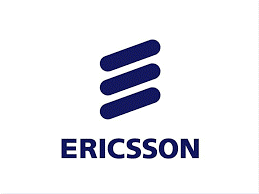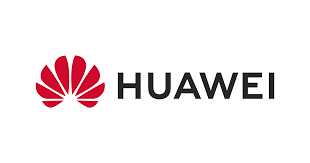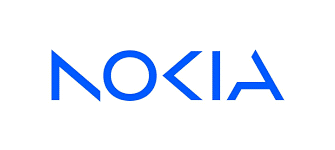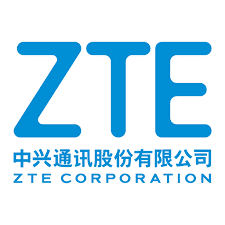
Top 10 Trends in the Global Microwave Backhaul Links Market: Key Companies and future Insights
RELEASE DATE: Mar 2025 Author: Spherical InsightsRequest Free Sample Speak to Analyst
The Global Microwave Backhaul Links Market Size is experiencing significant growth, driven by increasing demand for high-speed data transmission, advancements in microwave radio technology, and the rapid expansion of 4G and 5G networks.
Global Microwave Backhaul Links Market Size
"The Global Microwave Backhaul Links Market is expected to grow from USD 9.58 Billion in 2023 to USD 21.8 Billion by 2033, at a CAGR of 8.57 % during the forecast period 2023-2033."
Top 10 Trends in the Global Microwave Backhaul Links Market
1. Increasing Demand for High-Capacity Networks
The growing need for high-speed and high-capacity networks is driving demand for microwave backhaul links. With the expansion of 4G and 5G networks, operators require efficient and scalable backhaul solutions to handle increasing data traffic. Microwave backhaul provides a cost-effective and rapid deployment alternative to fiber, making it an attractive choice for telecom providers.
2. Expansion of 5G Networks
The global rollout of 5G technology is a significant driver for microwave backhaul links. As 5G networks require ultra-low latency and high bandwidth, microwave backhaul solutions are evolving to support these requirements. Advanced microwave solutions, including E-band and millimeter-wave (mmWave) technologies, are being increasingly adopted to meet the demands of next-generation connectivity.
3. Rising Adoption of Millimeter-Wave (mmWave) Technology
Millimeter-wave technology is gaining traction due to its ability to provide high-capacity wireless backhaul solutions. The adoption of mmWave frequencies, such as E-band (70/80 GHz) and V-band (60 GHz), is growing as they offer greater bandwidth and improved spectral efficiency. These frequencies enable higher data transmission rates, making them essential for supporting 5G deployments and urban network densification.
4. Shift Towards Software-Defined Networking (SDN) and Network Function Virtualization (NFV)
The integration of SDN and NFV in microwave backhaul networks is transforming the industry by enhancing flexibility, scalability, and automation. SDN enables centralized network management, allowing operators to optimize traffic flow and improve network efficiency. NFV, on the other hand, reduces hardware dependency, enabling cost-effective and programmable backhaul solutions that adapt to dynamic network demands.
5. Increasing Use of Hybrid Microwave-Fiber Solutions
Operators are adopting hybrid microwave-fiber solutions to achieve an optimal balance between capacity, cost, and deployment speed. While fiber provides high capacity, microwave backhaul ensures rapid deployment and cost savings in areas where fiber installation is challenging. The combination of these technologies enhances network resilience, offering seamless connectivity in urban and remote areas.
6. Growing Demand for Energy-Efficient and Sustainable Solutions
Sustainability is becoming a crucial factor in the microwave backhaul market. Operators are focusing on energy-efficient solutions to reduce carbon footprints and operational costs. Innovations such as low-power microwave systems, solar-powered backhaul links, and AI-driven energy management solutions are being explored to enhance sustainability in network infrastructure.
7. Deployment of Private Wireless Networks
Enterprises across industries such as manufacturing, mining, and logistics are deploying private wireless networks that require reliable backhaul solutions. Microwave backhaul links provide an efficient alternative to fiber in remote and industrial settings, enabling secure and high-speed connectivity for private LTE and 5G networks. This trend is expected to drive further investments in customized microwave solutions.
8. Advancements in Adaptive Modulation and Interference Mitigation
Technological advancements in adaptive modulation and interference mitigation are improving the performance of microwave backhaul networks. Adaptive modulation allows networks to dynamically adjust signal transmission based on real-time conditions, optimizing reliability and capacity. Additionally, interference mitigation techniques, such as beamforming and intelligent spectrum management, enhance network efficiency, especially in congested urban environments.
9. Growing Demand in Emerging Markets
Emerging markets are witnessing rapid growth in mobile broadband adoption, driving demand for cost-effective and scalable backhaul solutions. Microwave backhaul links play a vital role in expanding connectivity in regions with limited fiber infrastructure. Governments and telecom operators in Asia-Pacific, Latin America, and Africa are investing in microwave technology to bridge the digital divide and support economic growth.
10. Increased Focus on Security and Reliability
As network traffic and cyber threats increase, ensuring security and reliability in microwave backhaul links is a top priority. Advanced encryption protocols, AI-driven threat detection, and secure communication frameworks are being integrated into microwave solutions to protect data transmission. Operators are also focusing on redundancy mechanisms and predictive maintenance to enhance network uptime and resilience.
List of Key Companies
- Ericsson
- Huawei Technologies Co., Ltd.
- Nokia Corporation
- ZTE Corporation
- NEC Corporation
- Ceragon Networks Ltd.
- Siklu Communication Ltd.
- DragonWave-X
- Aviat Networks, Inc.
- Intracom Telecom
- SIAE Microelettronica S.p.A.
- Mimosa Networks, Inc.
- Proxim Wireless Corporation
Top 5 Companies in Global Microwave Backhaul Links Market
1. Ericsson

Headquarters: Stockholm, Sweden
Ericsson, founded in 1876, is a leading provider of information and communication technology (ICT) to service providers. The company offers services and solutions that enable customers to deliver fully connected experiences, focusing on areas such as 5G, cloud infrastructure, and digital services. Ericsson operates in over 180 countries, collaborating with customers to innovate and drive the evolution of communication technologies.
2. Huawei Technologies Co., Ltd.

Headquarters: China
Established in 1987 by Ren Zhengfei, Huawei is a Chinese multinational specializing in telecommunications equipment and consumer electronics. The company provides a wide range of products and services, including 5G infrastructure, smartphones, cloud computing, and enterprise solutions. Huawei operates in more than 170 countries, aiming to bring digital technology to every person, home, and organization for a fully connected, intelligent world.
3. Nokia Corporation

Headquarters: Espoo, Finland
Nokia, founded in 1865 and headquartered in Espoo, Finland, is a global leader in network infrastructure and advanced technologies. The company offers services in 5G, Internet of Things (IoT), IP routing, fixed networks, and mobile phones. Nokia collaborates with customers worldwide to deliver innovative solutions that enhance connectivity and drive digital transformation across various industries.
4. ZTE Corporation

Headquarters: Shenzhen, China
ZTE Corporation, established in 1985 and based in Shenzhen, China, is a prominent provider of telecommunications equipment and network solutions. The company offers a diverse range of products and services, including wireless, wireline, and optical transmission equipment, as well as mobile devices. ZTE serves customers globally, focusing on delivering innovative solutions that support the development of telecommunications networks and services.
5. NEC Corporation

Headquarters: Tokyo, Japan
NEC Corporation, founded in 1899, is a leading provider of IT and network solutions. The company offers services in areas such as 5G, cloud computing, AI, and cybersecurity, aiming to create social value through its technology solutions. NEC operates globally, collaborating with partners and customers to drive digital transformation and address societal challenges.
Conclusion
The global microwave backhaul links market is evolving with advancements in 5G, millimeter-wave technology, SDN, and energy-efficient solutions. As telecom operators seek scalable and cost-effective backhaul options, microwave technology remains a crucial enabler of next-generation connectivity. The increasing demand for high-capacity networks, hybrid fiber-microwave solutions, and secure communication frameworks will continue to shape the industry’s growth in the coming years.
About the Spherical Insights & Consulting
Spherical Insights & Consulting is a market research and consulting firm which provides actionable market research study, quantitative forecasting and trends analysis provides forward-looking insight especially designed for decision makers and aids ROI.
Which is catering to different industry such as financial sectors, industrial sectors, government organizations, universities, non-profits and corporations. The company's mission is to work with businesses to achieve business objectives and maintain strategic improvements.
CONTACT US:
For More Information on Your Target Market, Please Contact Us Below:
Phone: +1 303 800 4326 (the U.S.)
Phone: +91 90289 24100 (APAC)
Email: inquiry@sphericalinsights.com, sales@sphericalinsights.com
Contact Us: https://www.sphericalinsights.com/contact-us
Need help to buy this report?